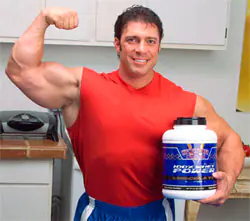Professional bodybuilders seem to constantly live in splendor. They train all year round, earn decent money for it, and participate in competitions, enjoying the competition itself and the fact that they provide aesthetic pleasure to the audience. But not every fan present at iron sport competitions knows how difficult it is for a bodybuilder to achieve these achievements.
Developing physical strength and muscle mass, drying muscles and nutrition give the athlete much more trouble than it seems to the uninitiated, who believe that most bodybuilders have large mass and excellent relief only due to steroids and genetic talent. This is partly true, but more than half of the success of a professional bodybuilder is hard training, proper nutrition and an appropriate lifestyle.
Drying muscles is needed only when muscles, developed to the limit, need to be given relief. For an amateur who exercises “for himself” and does not observe excessive excess fat, the “drying” period is not particularly necessary.
As you know, the “drying” period, which comes after a period of active weight training, implies not just the inclusion of aerobic exercise in training, but a transition to a different training and nutrition regimen. To train for separation, you need to do a series of several exercises, each with 3-4 approaches, with the number of repetitions from 12 to 20. The diet during this period should also be different - less fat and carbohydrates, and as much protein as needed athlete per day.
This is roughly what most regulars at fitness centers do. They do a lot of exercises in a lot of sets and repetitions, but not all of them can boast impressive muscles. This happens because they do not exercise intensively enough and do not pay enough attention to their diet. Without an appropriate diet, it is almost impossible to achieve impressive athletic results.
The majority of your protein intake should come from animal proteins. That is, from meat, fish and poultry. This is necessary so that the muscles, while gaining definition, do not become smaller. The athlete must also consume protein powder and amino acids in order to constantly maintain the required level of essential nutrients in the body and recover after training.
Sports supplements such as creatine and ribose can be excluded from the diet during the “drying” period. “Pumping” training (in a large number of approaches and repetitions) is not as easy as it seems, but still easier than strength training, in which much more ATP and oxygen are spent than during “relief” training.
Post Views: 112


